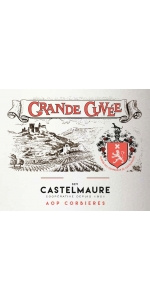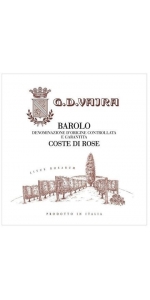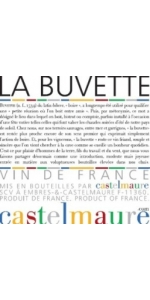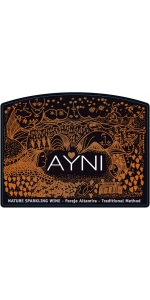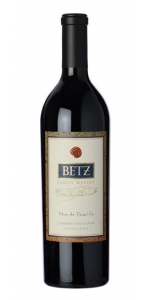Castelmaure Corbieres Vin-Gris Rose 2018
| Country: | France |
| Region: | Languedoc |
| Winery: | S.C.V. Castelmaure |
| Grape Type: | Grenache |
| Organic: | Yes |
| Vintage: | 2018 |
| Bottle Size: | 750 ml |
Castelmaure Cuvee N°3 Corbieres is made from 70% Syrah, 28% grenache and 2% Carignan
Castelmaure Grande Cuvee Corbieres Rouge is made from 50% Grenache (30 year old) and 50% Syrah (30 year old)..
In the early 1990’s, Castelmaure began experimenting with a Prestige Cuvée of Corbières. This wine has become known as “Grande Cuvée” and is made with the help of the winemaking team of Tardieu-Laurent.
Vinification: destemming, pneumatic press, end of fermentation at 25 degrees C; two racking; aging in tank then in 220 Liter Bordeaux barrels for 10-12 months. Egg fining, slight filtration..
Deep and intense color, powerful aromas of dark berry fruit, prune and coffee nuances, and a persistent finish.
Vineyards: planted on 50% Schist and 50% limestone soils.
G.D. Vajra Barolo Coste di Rose is made from 100 percent Nebbiolo.
The Coste di Rose is a very seductive wine right out of the gate. Cherries and roses burst on the nose, with hints of amarena, red hard candy, wild berries, wet stone, mint and thyme. The palate is radiant and expressive, with all of the signature elements of Coste di Rose in nice evi-dence: the ethereal character, the saline, up-front tannic structure, and further whiffles of roses and cherries in the finish.
Review:
This wine shows a darker and more savory profile than Vajra’s Costa di Rose, its black-cherry flavors tinged with notes of licorice and tobacco. Scents of lavender and violet lend a delicate touch to the wine, which continued to gain verve and freshness with time in the glass.
-Wine & Spirits 96 Points
Castelmaure La Buvette is made from 60% Grenache, 40% Carignan
Vinification: Grenache - destemming in low temperature, short maceration..
Carignan - carbonic maceration.
Fining, filtration, cold stabilization.
A purple color, intense aromas of strawberry and cassis. Fresh and fruity in the mouth with silky smooth tannins. Great as an aperitif, it also pairs well will grilled meats, salads.
Ayni is the quechua name of a principle of reciporcity practised for centuries by the andean cultures, it means in order to receive something you first have to give. Ayni is also the name of our most special vineyard, located in Paraje Altamira one of the best appelations within Uco Valley in Mendoza.
Argentina has a history of sparkling wine production since the early 1960’s.
Tasting Notes: Aged for 18 months on its lees before disgorgement. It’s a creamy with a nice toast aroma. It is made in a well-balanced style, with fine bubbles and a dry, palate-cleansing finish.
Vineyards: 100% Altamira in the Uco Valley subregion
Soil type: Sandy loam over calcium carbonate coated gravels, 30 to 50 cm deep
Grapes: 100% Pinot Noir
Average age of the vines: 10 years
Winemaking: Methode Traditionnelle (Champenoise). Aged sur lattes for 18 months. Made following the tratidional method, fermentation goes until it gets totallay dry. No liquor is added to keep the freshnes, elegance and purity of is clean profile.
A versatile wine, good on its own or paired with any food.
"An impressive first release for this all-Pinot Noir bubbly from Paraje Altamira, aged for 18 months on its lees before disgorgement. It’s a creamy, bready, well-balanced style, with fine bubbles and a dry, palate-cleansing finish. A fizz to watch. 2017-22"
- Tim Atkin (Argentina Special Report 2017), 92 pts
"Perhaps with the same sort of structural power that Altamira reds possess, this sparkling rosé shows something immutable in body, lively texture, bracing acidity. The wine spent 18 months on the lees and this, no doubt, provides flavor complexities well beyond the fruit, but still the fruit predominates with intense aromas, substantial, and crisp, lively acidity. If what you’re looking for is a sparkler for carpaccio or roast beef, this is it."
- Descorchads 2018, 94 pts
Betz Family Cabernet Sauvignon Pere de Famille is 88% Cabernet Sauvignon, 10% Petit Verdot and 2% Merlot
Review:
"This is a wine for the ages. Aromas of thyme, the blackest of cherries, licorice, bay leaf and spice are followed by outright delicious, plump fruit flavors. There's a whole lot of primary fruit, with ample structure to hang it all on, along with plenty of depth and intensity. The finish is near endless. It flat-out impresses, with remarkable intensity. Best from 2028 to 2038. - SEAN P. SULLIVAN."
- Wine Enthusiast (September 2021), 95 pts
"A firm, polished red with aromas of blackberry, iodine, tobacco leaf, cocoa and cedar. It’s medium-to full-bodied with firm, chewy tannins. Structured, layered and focused. Lots going on, with a long finish. Try from 2023."
- James Suckling (May 2021), 95 pts
"Incorporating 10% Petit Verdot and 2% Merlot from a mix of sites in the Columbia Valley, the 2018 Cabernet Sauvignon Père De Famille reveals a healthy ruby/purple hue to go with beautiful cassis fruits interwoven with notions of dried rose petals, violets, cedary spice, and chalky minerality. Medium to full-bodied, reasonably well concentrated, yet elegant and beautifully balanced, it opens up nicely with time in the glass and will benefit from 2-4 years of bottle age and keep for 20 years."
- Jeb Dunnuck (May 2021), 95 pts
Castelmaure Corbieres Vin-Gris (Rose) is made from 80% Grenache, 10% Carignan, 10% Cinsault.
Pale pink rose color, a classic gris de gris wine with salmon hues. Delicate strawberry nose, seamless and fine pointed.
The S.C.V Castelmaure Estate
S.C.V. Castelmaure was founded in the 1920’s and today consists of 65 members, of which 15 bring 85% of the production. The winery is located in the unofficial Corbieres cru site of Durban (there are 11 unofficial Cru’s in Corbieres), which will become soon an official Cru together with Boutenac and Alaric. The Serre mountain in the south protects the little plateau of Castelmaure from the off weather patterns of the Mediterranean sea.
Patrick de Marien, the president of the cave, and Bernard Pueyo, the director, work in conjunction with Tardieu/Laurent in trying to produce wines of higher quality each year.
The S.C.V Castelmaure Vineyard
The AOC Corbieres was created in 1985 and measures 23,000 hectares (56,810 acres). The appellation requires a minimum of two grapes in a wine blend.
The co-op farms 350 hectares (868 acres) around the tiny hamlet of Embres et Castelmaure. The 760 parcels are inspected and the characteristics recorded on computer. Each parcel is supervised individually by a technician who dedicates his time to this task. They have re-learned to prune, plough, check yields, sort, select, with a permanent focus on the respect of the environment. All the grapes are harvested by hand. In the cellar, vats hygiene, temperature control, ultramodern pressing contribute to a better expression of the terroir.
Castelmaure produces 90% red wine of which 80% is A.O.C. Corbieres.
The soil is made of schist, limestone, alluvial river wash and argilo-calcaire.
- back
Arzuaga Gran Reserva 95% Tempranillo, 4% Cabernet Sauvignon and 1% Merlot.
Presenting a ruby red color, this wine has a wide range of aroma of ripe fruit compote, toast, and leather. Fine, complex, and attractive with a great balance. Silky and pleasant in the mouth with a bit of spice detected in the finish.
Serve with red meats, roasts, or game dishes. Its flavor is enhanced with cured or fatty cheeses.
Review:
Big, bold, and age-worthy, the 2019 Gran Reserva is the biggest production yet from the producer of this wine at 9,423 bottles. Salty and spicy, it’s voluminous, richly layered in concentrated, full-bodied swaths of sweet red berry, toasted oak, balsamic, and tobacco. After 40 months in French oak, the tannins are sweet and melty.
-Jeb Dunnuck 98 Points
Napa Cellars Cabernet Sauvignon is made from 100 percent Cabernet Sauvignon.
Napa Cellars Cabernet Sauvignon brims with ripe, concentrated aromas of black currant, loganberry and fig, underscored by threads of warm spice and mocha.
Review:
Aged 21 months in French and Hungarian oak, notes of toasty, spiced cocoa, cassis, and clove are the preamble for the palate’s introduction to this most approachable red. Deep and savory, with black tea, plum, and graphite. Tannins are supple and easy going, and acidity is bright, establishing an energetic finish. - The Tasting Panel, July/August 2025
-Tasting Panel/Somm Journal 92 Points

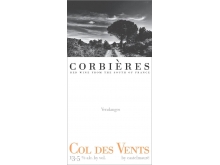

-150x300.jpg)
